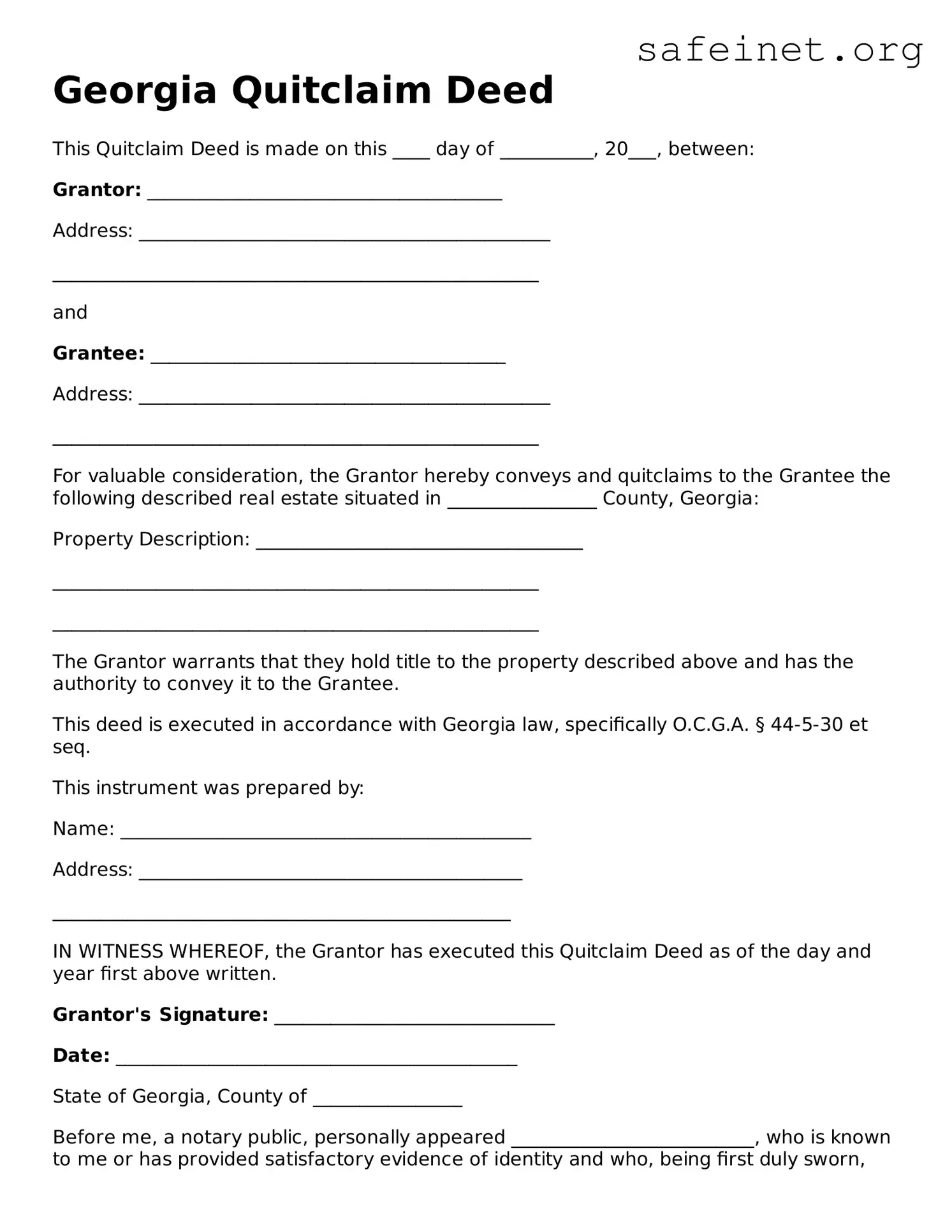Georgia Quitclaim Deed
This Quitclaim Deed is made on this ____ day of __________, 20___, between:
Grantor: ______________________________________
Address: ____________________________________________
____________________________________________________
and
Grantee: ______________________________________
Address: ____________________________________________
____________________________________________________
For valuable consideration, the Grantor hereby conveys and quitclaims to the Grantee the following described real estate situated in ________________ County, Georgia:
Property Description: ___________________________________
____________________________________________________
____________________________________________________
The Grantor warrants that they hold title to the property described above and has the authority to convey it to the Grantee.
This deed is executed in accordance with Georgia law, specifically O.C.G.A. § 44-5-30 et seq.
This instrument was prepared by:
Name: ____________________________________________
Address: _________________________________________
_________________________________________________
IN WITNESS WHEREOF, the Grantor has executed this Quitclaim Deed as of the day and year first above written.
Grantor's Signature: ______________________________
Date: ___________________________________________
State of Georgia, County of ________________
Before me, a notary public, personally appeared __________________________, who is known to me or has provided satisfactory evidence of identity and who, being first duly sworn, deposes and says that they executed this Quitclaim Deed.
Notary Public Signature: _____________________________
Date: ____________________________________________
My Commission Expires: ___________________________
